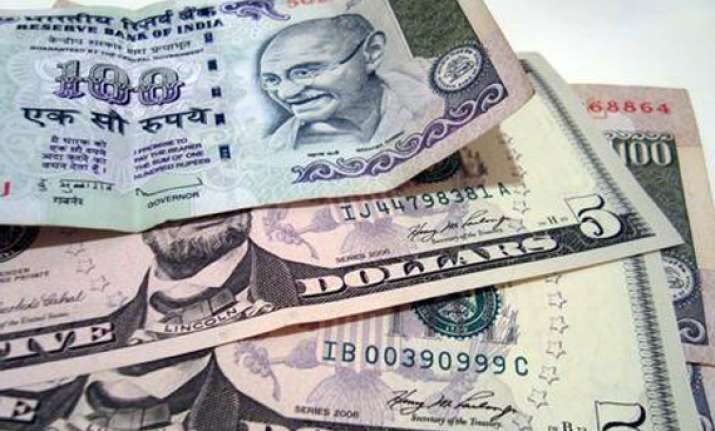Why Rupee is Falling against Dollar - An accurate Analysis

At present, the value of India's currency "rupee" is continuously falling and its value has declined by 8% between January - June 2018. Among the BRICS nations; after the Russian Ruble, the Indian rupee depreciated the most in this period. Now the exchange rate between the dollar and rupee is hovering around Rs.69= 1 dollar.
Devaluation Meaning: When the external value of the domestic currency depreciates while the internal value remains the same, such situation is known as the devaluation of the domestic currency.
The basic difference between the devaluation and depreciation is that, the devaluation is done by the government of the country deliberatelywhile the depreciation take place because of market forces i.e. demand and supply.
At the time of independence; India adopted the Par Value System of International Monetary Fund (IMF). On the August 15, 1947; the exchange rate between the Indian rupee and US dollar was 1USD = 1 INR.
Now let us understand the reasons behind the depreciation of the Indian rupee against the dollar currently;
1. Increase in the price of the crude oil: As we all know that India produces just 20% crude oil of her requirement and rest is imported from the other countries like Iraq, Saudi Arabia, Iran and other gulf countries. Crude oil is the biggest contributor in the import bill of India.
According to a January report from energy research and consultancy firm Wood Mackenzie; The daily fuel demand of India is expected to more than double to 190,000 barrels in 2018, up from last year’s 93,000 barrels.
As the demand of crude oil is increasing the bill of oil import is also increasing.
Data published by the Petroleum Planning and Analysis Cell (PPAC) points that India’s total crude oil import bill in the current financial year (2018-2019) is expected to jump 24% to $109 billion from $88 billion last fiscal year.
Economic survey 2018 estimates that if the price of crude oil increases 10 dollar per barrel then the GDP of India decreases up to 0.2-0.3 percent.
So increase in the demand of crude oil will be followed by the increasing import bill in the form of payment of more dollars to oil exporting countries. Hence the demand of dollar will increase in the Indian market which will reduce the value of Indian rupee.
2. Beginning of trade war between the USA and China: The US President Donald Trump has initiated the trade war with China and European countries and India and these countries also retaliated in the same way. So due to this war the price of the imported commodities will go up which will further increase the outflow of dollar from the Indian market.
As we know that Indian import bill is always greater than its export bill. It means that the trade war will adversely affect the Indian market and India will also experience the outflow of US dollar from its domestic market.
3. Increasing Trade Deficit of India: A situation, in which the import bill of a country exceeds its export bill, is called trade deficit.
Indian merchandise trade deficit of $157 billion in 2017-18 was the widest since 2012-13. In the FY 2012-13, the country had reported a merchandise trade deficit of $190 billion. Trade deficit was around was $ 118 billion in the FY 2016.
Its simple mean is; outflow of foreign currency is more from Indian market as compared to inflow of foreign currency.
As per the law of demand; if the demand of a commodity increases, its price also follows it. In the same way; when more and more foreign currency i.e. dollar goes out of Indian market, its domestic price increases and the price of Indian rupee decreases.
4. Out flow of Foreign Currency: It is worth to mention that when the foreign investors find other attractive markets in the other parts of the world; they pull out their invested money by selling the equity shares. But they demands the most respected currency or easily accepted money i.e. dollar. So in such situation the demand of dollar increases which further increases its price.
Foreign Portfolio Investors (FPIs) have pulled out nearly Rs. 48,000 crorefrom Indian capital markets in the first six months of 2018, making it the fastest outflow in a decade.
FPIs withdrew a net sum of Rs. 6,430 crore from equities besides Rs. 41,433 crore from the debt markets during January-June period of the year, taking the total outflow to Rs 47,836 crore.
5. Atmosphere of Political Uncertainty: As per many surveys; done by the media houses, thepopularity of the current NDA government is decreasingwhich is creating the atmosphere of the uncertainty among the foreign investors.
Major point of uncertainty is that whether the current NDA government will retain the power at centre or not. If the new government comes in the power and changes the FDI and other policies then the money of investors will trap.
So the foreign investors are pulling out their money from the Indian market to invest in those markets which can provide them secured return. This is the reason that the demand of dollar is increasing and the price of Indian rupee of falling.
Hence on the basis of the combined impact of the above mentioned reasons the exchange rate between the dollar and India rupee is touching its lowest point.
In the conclusion it can be hoped that if the RBI and government of India puts combined efforts in this directions then depreciation trend in the Indian currency can be checked.



Comments